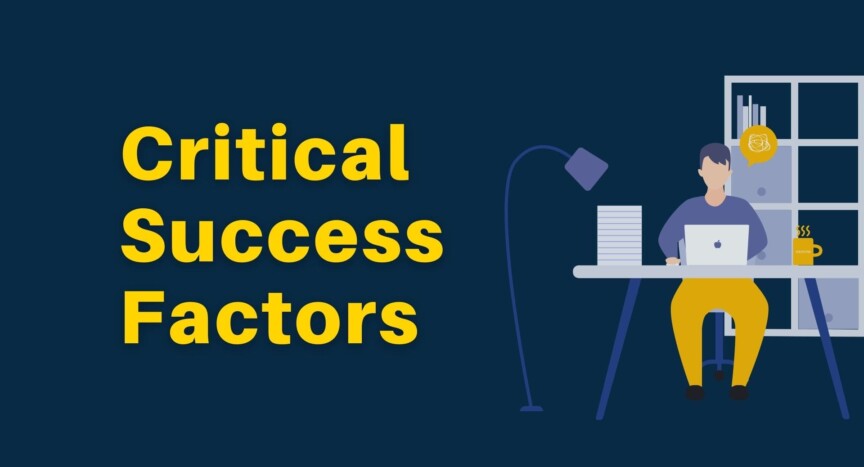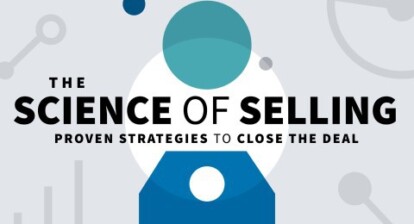Understanding what is critical to your customer’s success is critical to YOUR success!
For us to understand where we can offer the most value to our customers to gain a competitive advantage and loyalty, we need to understand those areas that are critical to their success as a business, and to them as individual stakeholders.
Critical Success Factors (CSFs) are the essential areas of activity that must be performed well in order to achieve the mission, objectives and goals of a business. When you uncover and focus on your customer’s CSFs, it will help you target and develop effective solutions for both you and your client to achieve success. The focus of the CSF activity is not to help us advance a sale towards our goals, rather they are activities to help your customers achieve their goals and objectives.
The model of CSFs was created by D. Ronald Daniel in the 1960s. It was made popular 10 years later by John F. Rockart, of MIT’s Sloan School of Management, and is now a widely used tool within businesses and as part of successful account management.
To identify your customers CSFs you need to understand the mission and strategic goals of their business as well as their own personal aims and aspirations. CSFs focus on the most important areas and get to the very heart of both what is to be achieved and how you will achieve it.
Using the Model: Summary Steps
These will help you identify the CSFs for your individual customer or project:
● Step 1: Establish your customer’s or project’s mission and strategic goals
● Step 2: For each strategic goal, ask yourself “what area of business or project activity is essential to achieve this goal?” The answers to the question are your customers CSFs
● Step 3: Evaluate the list of customer CSFs to find the absolute essential elements for achieving success – these are the Critical Success Factors.
NOTE: Does this mean prioritize or pare down?
● Step 4: Identify how you can add unique value as a business partner to each CSF
● Step 5: Communicate these insights to your customer
● Step 6: Keep monitoring and re-evaluating your CSFs to ensure you keep progressing
Once you have a list of the customer’s CSFs from your own research and knowledge you can add to this by finding out more from the individual stakeholders.
This will not only give you more information about the overall customer’s goals but also the personal take on it by the stakeholders involved.
This ensures any solution you put forward feed into the Critical Success Factors of the customer and the individuals which build the value of your solution – and yourself.
As you identify and evaluate the customer’s CSFs and have meetings with your stakeholders, you will uncover additional strategic objectives and more detailed objectives
Tip – To help you with this use the two models below
Political forces: Political factors refer to the stability of the political environment, legislative initiatives and the attitudes of political parties or movements.
Economic factors: Represent the wider economy and may include economic growth rates, levels of employment and unemployment, costs of raw materials, interest rates and monetary policies, exchange and inflation rates.
Socio-cultural factors: The culture of the society that an organization operates within. They may include demographics, age distribution, population growth rates, level of education, distribution of wealth and social classes, living conditions and lifestyle
Technological factors: Refer to the rate of new inventions and development, changes in information and mobile technology, changes in internet and e-commerce.
Legal factors: Regulations regarding educational interests including intellectual property, fair use issues, etc.
Environmental factors: Identifiable elements in the physical, cultural, demographic environment that affect the survival, operation and growth of an organization.
Activity: Identify CSFs for one of your own customers or projects
Recap of steps:
● Step 1: Establish your customer’s or project’s mission and strategic goals
● Step 2: For each strategic goal, ask yourself “what area of business or project activity is essential to achieve this goal?” The answers to the question are your customers CSFs
● Step 3: Evaluate the list of customer CSFs to find the absolute essential elements for achieving success – these are the Critical Success Factors.
NOTE: Does this mean prioritise or pare down?
● Step 4: Identify how you can add unique value as a business partner to each CSF
● Step 5: Communicate these insights to your customer
● Step 6: Keep monitoring and re-evaluating your CSFs to ensure you keep progressing towards your customer’s goals
Customer
Objective Candidate Critical Success Factors Proposed
Solution




